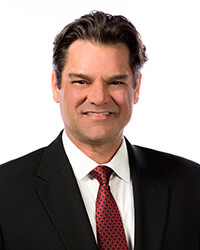
Quarterly CIO Commentary: Q4 2024
BOK Financial Chief Investment Officer Brian Henderson said November and December are good months for financial markets, and this year will probably be no exception. He explains what else is likely ahead this quarter, including more Fed rate cuts, investor uncertainty leading up to the election, and more.
Between more interest rate cuts on tap and a tight presidential election, the last few months of the year will almost certainly be eventful. Even though the broader U.S. economy probably won't feel the effects of these events until 2025, financial markets have already started seeing a boost—but will it last?
The short answer is yes, but likely with a drop in between.
Fed hoping to remain on track for a soft landing
The rise in stocks toward the end of the third quarter was due to the Federal Reserve's decision to cut the Federal Funds rate by 50 basis points, or 0.5%, at the September Federal Open Market Committee (FOMC) meeting. Although most anticipated that the Fed would cut rates at the meeting, the decision to cut by 0.50% (as opposed to 0.25%) was a surprise to many.
So, why did the Fed decide to start its rate-cutting cycle so aggressively? In many ways, the Fed is on the flipside of its position in 2022, when FOMC members felt behind the curve in bringing down inflation and thus had to raise rates relatively quickly. So far, that decision to raise rates so high so fast—and to keep them there—has proven successful: inflation has come down significantly, while economic growth has slowed while remaining positive.
However, now it's not inflation but rather the job market that has the Fed concerned because they don't want to fall behind on their mandate to promote maximum employment. As Fed Chair Jerome Powell said leading up to September's meeting, "We do not seek or welcome further cooling in labor market conditions." On one hand, this concern is warranted by how much unemployment has increased. As of August, the national unemployment rate was up 0.8% from its low of 3.4% last year. On the other hand, it's important to keep in mind just how low an unemployment rate of 3.4% is. Even though that number has gone up, August's unemployment figure of 4.2% is still low on a historical basis.
All that said, the FOMC is likely to continue lowering rates at its November and December meetings, probably at a pace of 25 basis points (0.25%) per meeting. Those rate cuts will be among the factors supporting financial markets during the quarter, even though the broader economy won't feel the impact until next year, given that monetary policy tends to operate with a lag.
Election may drag down markets temporarily
Meanwhile, for many Americans, the upcoming presidential election will be the biggest national event on their minds in the fourth quarter. As with the Fed's rate cuts, the results of the election probably won't have an impact on the broad U.S. economy until 2025. However, for financial markets, any impacts will be more immediate because the markets are forward-looking.
Leading up to the election, investors are likely to be more cautious due to the uncertainty surrounding the results, especially given how close recent polls are. However, after the election, financial markets likely will rebound and may even hit new highs. The reasons for this are twofold. First, investors will know who will be in the White House and Congress next, removing the uncertainty. Second, seasonally November and December tend to be good months for financial markets, and that has historically proved true even in election years.
Looking more gradually at the markets, the large differences between the two presidential candidates' policies are likely to benefit different investments depending on who is in the White House. If Kamala Harris wins, it would likely be positive for domestic large-cap stocks and the bond market would remain mostly the same. If Donald Trump wins, it would be positive for small- and mid-cap stocks and longer-term yields may rise in the bond market. That said, most policy changes have to be approved by Congress, so the composition of those houses also will be instrumental in deciding the course ahead.
Economic growth likely to remain positive
Although economic growth has slowed compared to the fast clip we saw in 2023, it has remained positive so far this year. This will probably remain true through the last quarter, though growth may be slower compared to the third quarter. Meanwhile, the unemployment rate will likely stay relatively steady.
This base-case scenario rests on several assumptions. First, although job growth probably will slow, there must still be enough new jobs to absorb any growth in labor supply, such as from new entrants into the job market. Second, it assumes that there won't be any major geopolitical flareups, such as in the Middle East. Finally, it assumes that inflation will continue to trend downwards and that the Fed can continue to cut rates.
However, as we've seen many times in the past, tides can turn quickly. Even though the path to a soft landing seems clearer now than in the past and the possibility of a recession continues to decline, there are no certainties.

Let's talk
Ready to talk to an advisor? Just have questions? We're here to help. We look forward to hearing from you.